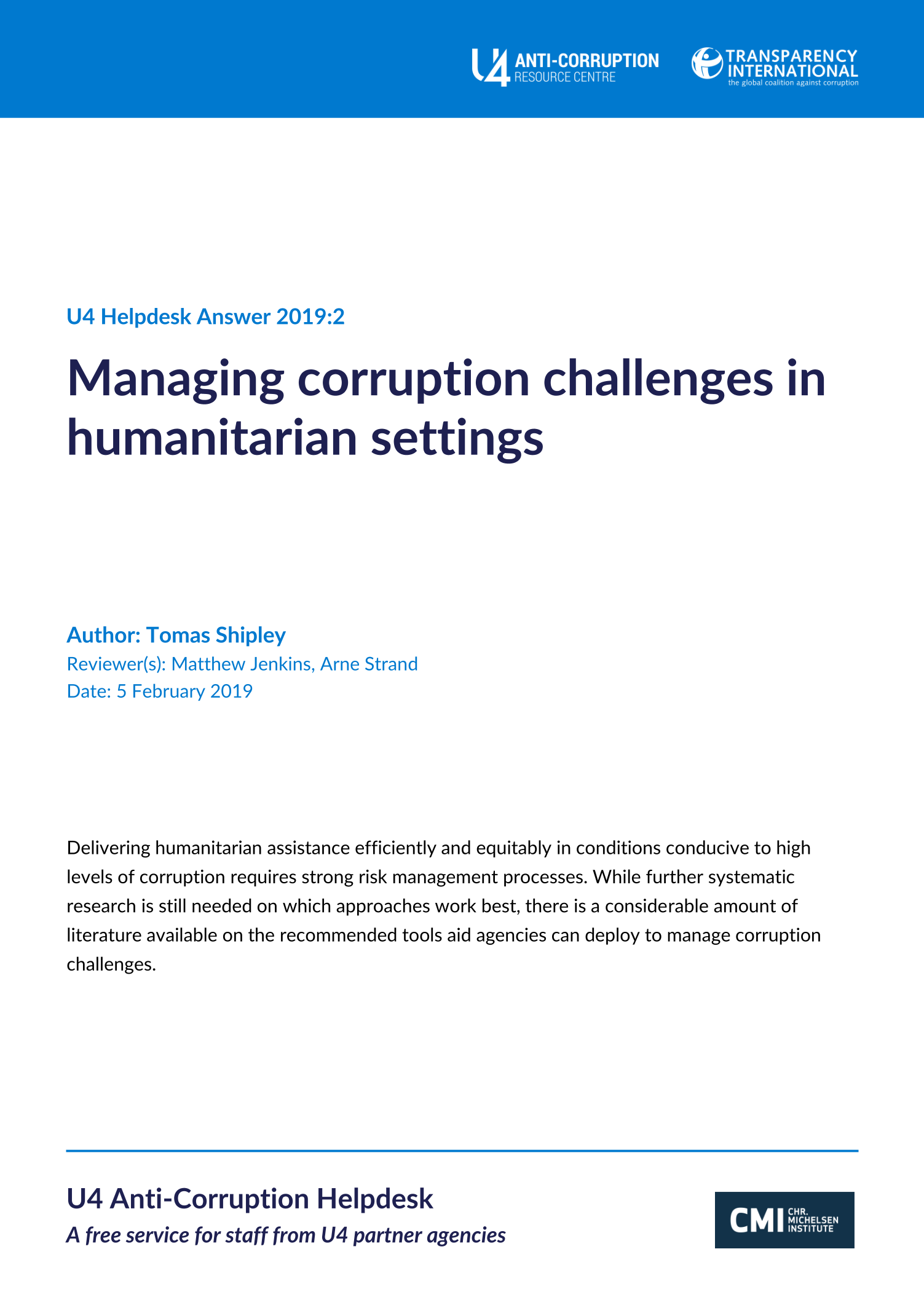Main points
- The high level of vulnerability in the humanitarian sector to corruption challenges is increasingly recognised. The level of discussion and openness around the topic is gradually improving.
- Corruption challenges in humanitarian settings vary significantly according to contextual conditions. Risks are present across the programme cycle with corruption taking diverse forms. These are not limited to financial forms of corruption and include sextortion, nepotism and political interference.
- There are existing detailed resource texts on preventing and managing corruption risks (see in particular Transparency International 2014 and 2017) which provide various tools in these areas. This briefing summarises the key measures.
- There is also a growing number of country case studies which provide valuable examples of lessons learned from humanitarian crises.
- Nevertheless, there has been little systematic evaluation of which anti-corruption measures have proven to be the most effective. This is a gap in the literature where further research is needed.


